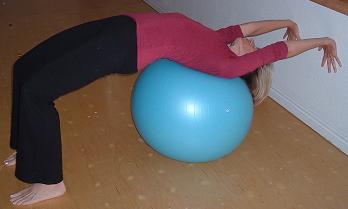A Yogic Approach to Back Pain
Suffering from back pain? Yoga can help.
By Timothy McCall, M.D.
Each year, millions of Americans suffer from debilitating back pain. Despite Western medicine’s phenomenal advances and powerful technology, two of the most commonly prescribed solutions—painkillers and surgery—do little to address the underlying causes of pain and can potentially cause side effects. In truth, a one-size-fits-all solution is impossible given that the causes and manifestations of pain—arthritis, strained ligaments, scoliosis, and herniated disks, to name a few—vary widely.
But as many practitioners can attest, yoga can offer effective healing that’s relatively free of side effects. The key is to proceed with caution and be willing to treat your healing as a process. It will likely take time and perseverance to find a treatment program that is help- ful. Here’s how I suggest you get started.
RULE OUT SERIOUS CAUSES. While potentially life-threatening causes of back pain, such as cancer, infections, and rupturing aortic aneurysms, are a lot less common than muscle spasms and sciatica, you should check with your health care practitioner to make sure it’s safe for you to practice yoga as part of your healing program—especially if you are over 50 or if you have worrisome symptoms like fever or unexplained weight loss.
TREAT THE INITIAL INJURY WITH CAUTION. When tissues are acutely inflamed or when you’re feeling a lot of pain, it’s important to proceed slowly. Aggressively working to improve strength or flexibility at this stage can backfire, causing even more pain, inflammation, and injury. However, studies have shown that strict bed rest causes more harm than good. Try breathing exercises and a gentle asana practice as soon as the first day of pain.
FIND AN EXPERIENCED TEACHER. Back problems are complex, so it’s important to find a teacher with adequate training and as much experience as possible. A yoga therapist not only will suggest exercises but will be able to create a unique and personalized program that’s appropriate for your levels of fitness, strength, and flexibility as well as your medical condition. By observing your practice and tracking how your body responds, he or she can gauge which elements are likely to be helpful and determine whether modifications are necessary.
BALANCE STRENGTHENING WITH STRETCHING. Doctors often prescribe stomach crunches to prevent future episodes of back pain. From a yogic perspective, such an approach is imprecise. Indeed, doing too many stomach crunches or other ab exercises can increase tightness in the hip flexors, like the psoas, potentially exacerbating back problems. The yogic approach is to determine which muscles need strengthening and which ones need stretching and to design a program to address those specific needs.
MAKE YOGA YOUR ALLY, NOT YOUR ENEMY. Avoid poses that could make the problem worse. If you have a lumbar disk problem, be careful with forward bends, particularly those that include a twist, like Janu Sirsasana (Head-to-Knee Pose). Also take care during transitions, when attention tends to wane: Avoid sudden changes of position and try stepping rather than jumping into poses.
CONSIDER PSYCHOLOGICAL FACTORS. While I don’t believe that stress, anger, and other emotions are typically the sole cause of back pain, they can play a role. Psychotherapy as well as yogic tools such as svadhyaya (self-study) and meditation may help.
In the Yoga Sutra (II.16), Patanjali taught that future suffering can be avoided. When applied appropriately and intelligently, yoga not only can help you recover from back pain, it may prevent it from recurring.
Timothy McCall is Yoga Journal’s medical editor. To suggest story ideas for future columns, e-mail drmccall@yogajournal.com. You can also find McCall through his Web site, www.drmccall.com.
November/December 2004







